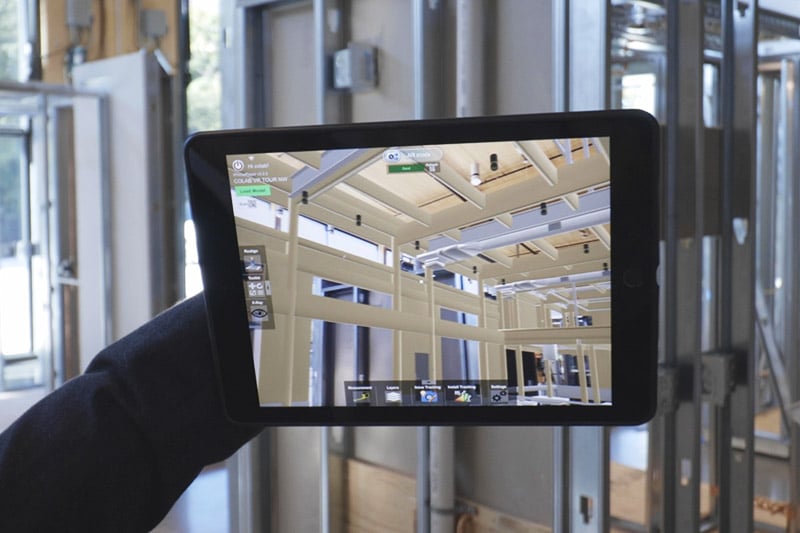Technology is changing the world at an alarming rate—and the construction industry is feeling the change just like everyone else.
Nowadays, construction companies have evolved into technology firms in their own right, implementing everything from smart labs to laser scanning and reality capture, to using drones to capture data to help make the build process more efficient.
But with new technologies constantly coming to market, promising exponentially innovative capabilities than the status quo, how do construction companies evaluate when a new tool or product is right for them?
David Stone, a virtual design and construction expert and a business unit VDC leader at DPR Construction, is familiar with this question. It’s one he’s answered almost every day in his career.
“There are a lot of different elements that we deal with,” Stone said of considering new construction technology. “But, at the end of the day, what we’re trying to achieve is improving our efficiency and quality to both our team as well as our owners and stakeholders.”

These are four strategies Stone said construction companies should consider when adopting a new technology.
First and foremost, consider the business need
There’s a tendency to sometimes become overly enamored with any new piece of technology when it comes out. But construction firms need to be cautious on this front when it comes to testing and implementing new technology.

“Sometimes we don’t know what we could use that new technology for,” Stone said.
He went on to cite an example: the iPad. When the tablet computer was first released by Apple in 2010, “nobody understood the business case for it,” Stone said. The link to construction wasn’t immediately clear.
Fast forward a couple of years later, and “every superintendent wanted one on their jobsite,” Stone said, “because they realized that they could use it to review their drawings in the field.”
Second, assess usability
One of the first things any construction firm should do when evaluating a new technology is look at its user interface.
If it’s intuitive and easy to use, great; but if only the most tech-savvy in the company are able to understand it and use it, then maybe consider another option.
“We need to keep it simple,” Stone said. “If I’m tech-savvy and I’m the only person that knows how to use the tool, I haven’t really solved the problem. If a workflow is simpler to use that has a much better chance of getting adopted.”
Third, get grassroots buy-in
Oftentimes the best way to get a large company to buy in on a new technology tool is to get people using it in the field first. Then, once they start using it and see its value, that adoption spreads throughout the rest of the company.

“We get buy-in from both the leadership and grassroots level,” Stone said. “We present it to leadership as well as to our end users and our site operations team, so they can give us the input that we need in order to make this a usable solution.”
So, the next time your construction firm is evaluating a new, shiny technology tool or product, be sure to put it to the test by truly determining the business case for it, having it testing and approved by leadership, as well as seeing how most of its prospective end users get value from it in the field.
Finally, get leadership buy-in
It’s hard for any company to adopt and use new technology properly if leadership doesn’t buy in. Whether it’s through providing financial resources or formalized training on the new tool, Stone said it’s vital that a construction firm’s leaders are on board. This also helps adoption trickle down to the rest of the company.










